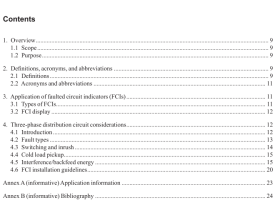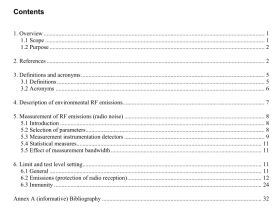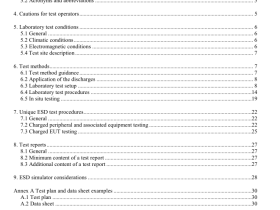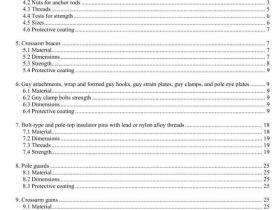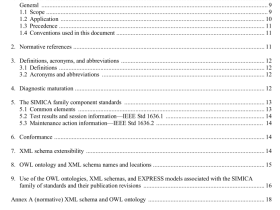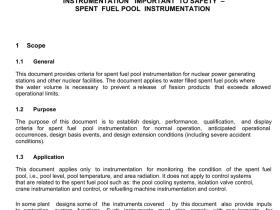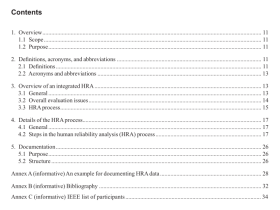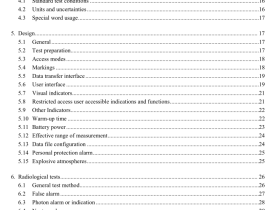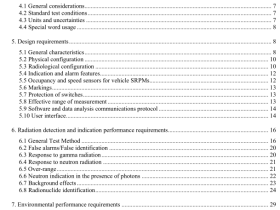ISO IEC IEEE 29119-2 pdf download
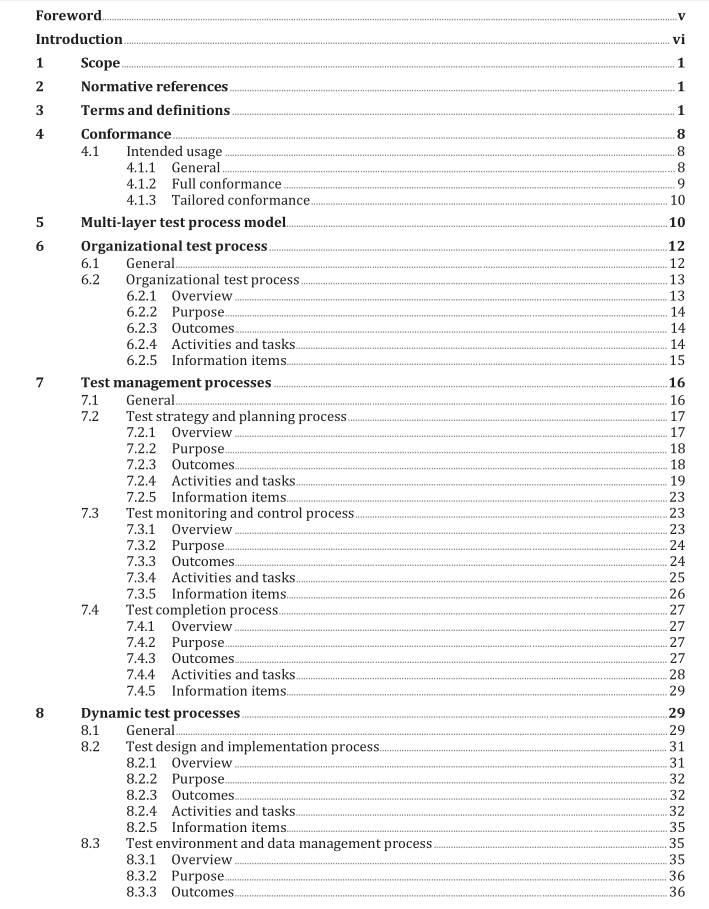
ISO IEC IEEE 29119-2 pdf download Software and systems engineering — Software testing — Part 2: Test processes
1 Scope
This document specifies test processes that can be used to govern, manage and implement softwaretesting for any organization, project or testing activity. It comprises generic test process descriptionsthat define the software testing processes. Supporting informative diagrams describing the processesare also provided.
This document is applicable to testing in all software development lifecycle models.
This document is intended for, but not limited to, testers, test managers,developers and projectmanagers, particularly those responsible for governing, managing and implementing software testing.
2Normative references
The following documents are referred to in the text in such a way that some or all of their contentconstitutes requirements of this document. For dated references,only the edition cited applies. Forundated references, the latest edition of the referenced document(including any amendments) applies.ISO/IEC/IEEE 12207,Systems and software engineering —Software life cycle processes
3 Terms and definitions
For the purposes of this document, the following terms and definitions apply.
ISO IEC and IE maintain terminology databases for use in standardization at the following addresses:- ISo online browsing platform: available at https://www.iso .org/oebp
—IEC Electropedia: available at https:/ / www.electropedia .org/
一 IEEE Standards Dictionary Online: available at https://ieeexplore .ieee .org/xpls/dictionary.jspNOTE For additional terms and definitions in the field of systems and software engineering, see ISO/IEC/IEEE 24765, which is published periodically as a “snapshot” of the SEVOCAB (Systems and software EngineeringVocabulary) database and is publicly accessible at https://www.computer.org/sevocab.
3.1
actual results
set of behaviours or conditions of a test item (3.42), or set of conditions of associated data or the testenvironment ([3.34), observed as a result of test execution (3.38)
EXAMPLE
Outputs to screen, outputs to hardware, changes to data, reports and communication messages
sent.
3.2
completion criteria
conditions under which the testing (3.61) activities are considered complete
3.3
dynamic testing
testing (3.61) in which a test item (3.42) is evaluated by executing it3.4
expected results
observable predicted behaviour of the test item (3.42) under specified conditions based on itsspecification or another source
3.5
exploratory testing
type of unscripted experience-based testing (3.61) in which the tester spontaneously designs andexecutes tests based on the tester’s existing relevant knowledge, prior exploration of the test item(3.42)(including the results of previous tests), and heuristic “rules of thumb” regarding common softwarebehaviours and types of failure
3.6
incident
anomalous or unexpected event, set of events, condition, or situation at any time during the life cycle ofa project, product, service, or system
3.7
incident report
documentation of the occurrence, nature, and status of an incident (3.6)
Note 1 to entry: Incident reports are also known as anomaly reports, bug reports, defect reports, error reports,issues, problem reports and trouble reports, amongst other terms.
3.8
organizational test practices
documentation that expresses the recommended approaches or methods for the testing (3.61) to beperformed within an organization, providing detail on how the testing is to be performed
Note 1 to entry: The organizational test practices is aligned with the organizational test policy (3.52).
Note 2 to entry: An organization can have more than one organizational test practices document to covermarkedly different contexts, such one for mobile apps and one for safety critical systems.
Note 3 to entry: The organtzational test practices can incorporate the context of the test policy where no separatetest policy is available.
3.9
organizational test process
test process(3.55) for developing and managing organizational test specifications (3.10)3.10
organizational test specification
document that provides information about testing (3.61) for an organization, i.e. information that is notproject-specific
EXAMPLE The most common examples of organizational test specifications are the organizational test policy([3.52) and the organizational test practices ([3.8].
3.11
performance testing
type of testing (3.61) conducted to evaluate the degree to which a test item (3.42) accomplishes itsdesignated functions within given constraints of time and other resources
3.12
product risk
risk that a product can be defective in some specific aspect of its function, quality, or structure
